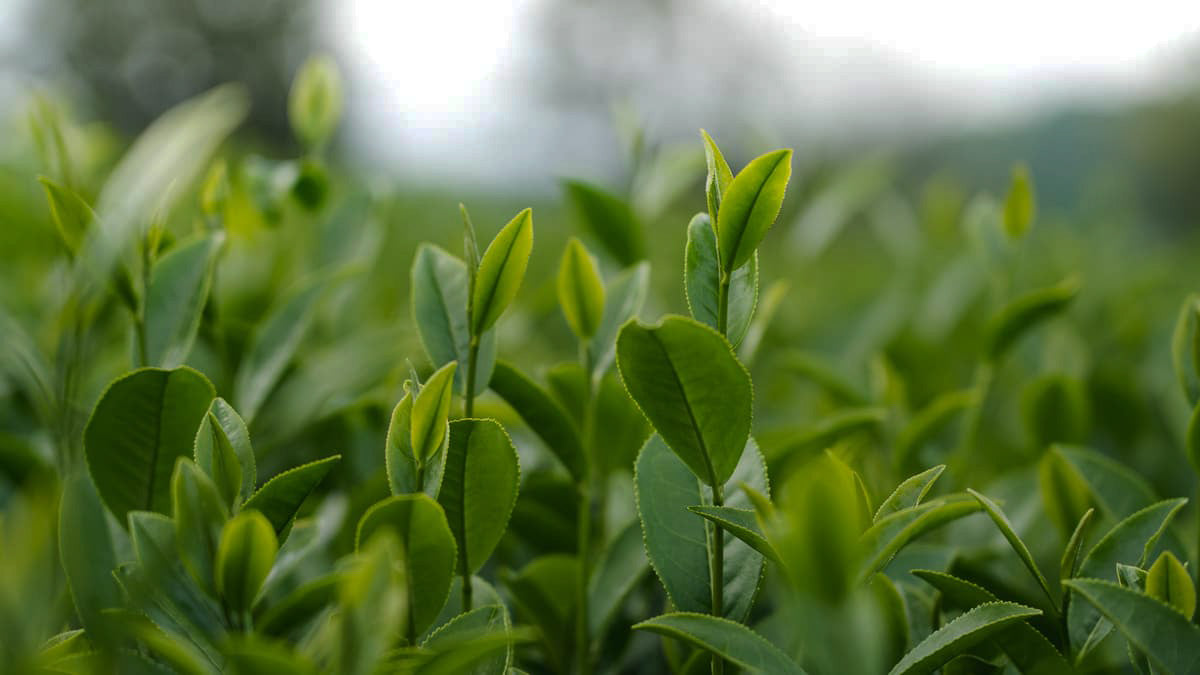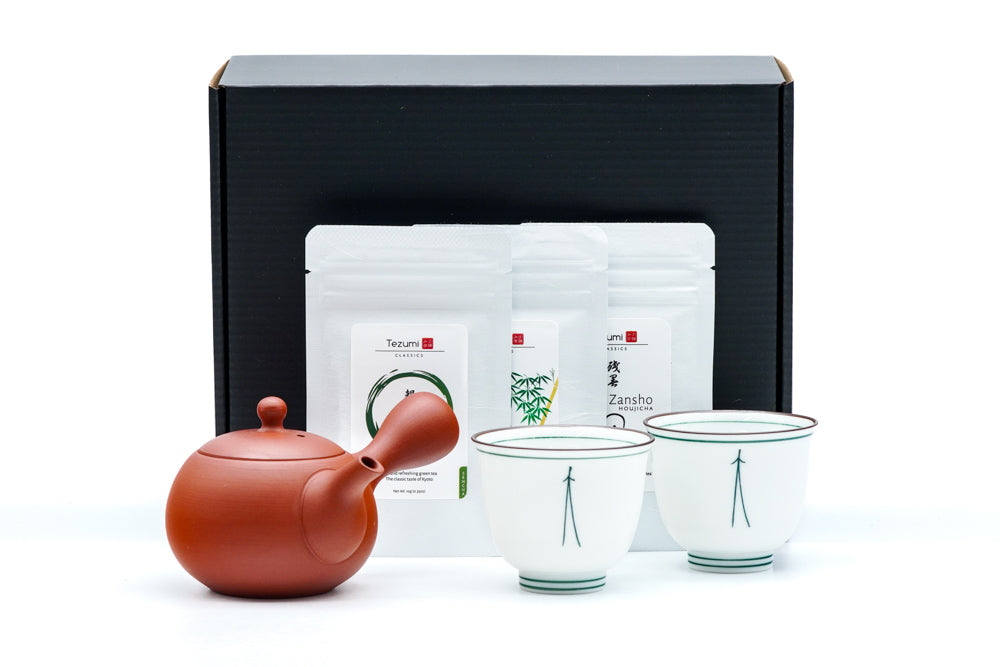Leaf to Bloodstream: The Emerging Tea Science of Caffeine and Theanine

There's no doubt that tea's energising and calming effects are one of the many reasons it has remained the world's favourite beverage (after water, that is). To examine how tea achieves these effects, we’ve once again consulted avid tea enthusiast and medical professional Dr. Ben Epstein, who has kindly shared this analysis of the interaction between caffeine and theanine for all of us to read. You can find more of his writing on his blog The Lazy Yogi.
Leaf to Bloodstream: The Emerging Tea Science of Caffeine and Theanine
by Benjamin Epstein, MD
From sages and philosophers to warriors and rulers, people among all walks of life have coveted the enchanting properties of tea for millennia. The seemingly magical qualities discovered in those leaves may be partially explained by the presence of two specific molecules: caffeine and theanine. It is thanks to the interplay of caffeine and theanine that we experience the unique effects of differing teas and tea preparations. While many select their tea based on flavor, cultivating an understanding of the molecular magic beneath the surface may further inform our choices. As you likely already know, the experience of drinking tea endures well beyond the moment of consumption.
Caffeine: The Shape of Energy?
In a world where students pull all-nighters, nurses endure long shifts, and sleep-deprived parents must face a full day ahead, it's hard to imagine life without caffeine. Many rely on coffee, energy drinks, or other caffeine-infused beverages for the energy needed to meet daily demands. But how many understand the mechanism behind caffeine’s effect, and how might that understanding prove beneficial?
Caffeine is the world's most widely consumed psychoactive substance. When we ingest caffeine, we are practicing pharmacology. We are choosing a dose and its delivery method to experience specific effects on our nervous system. To understand how caffeine works, consider its molecular structure.
Biochemistry, the study of chemical processes within living organisms, shares similarities with sacred geometry, particularly in how structure dictates function. The shape of a molecule helps to determine its effects. Take a molecule of adenosine, for example.

Adenosine serves not only as a building block of RNA but also as a neurotransmitter. When we are refreshed and alert, only a few adenosine molecules are floating inside our neurons. However, their numbers increase the longer we stay awake. Once more and more adenosine molecules accumulate, they find their way to adenosine receptors. These receptors recognize the unique shape of adenosine and when they bind together a reaction is triggered. Like a unique key fitting a lock, adenosine activates its receptor and leads to a neurologic response that we perceive as tiredness.
Now examine a molecule of caffeine:

Notice that it has a pentagon attached to a hexagon very similar in appearance to adenosine. However, there is an obvious difference in that adenosine has an extra pentagon protruding to the side. Thanks to the similar shape, caffeine fits into the same adenosine receptor. Yet because it doesn’t have that extra pentagon, it doesn’t activate the receptor. Think of it like jamming the wrong key into a lock. It won’t unlock the door but it also won’t let the right key unlock the door.
Therefore caffeine works by blocking the pathways by which we feel fatigue. Rather than providing any actual energy, caffeine simply makes us unable to experience how tired we are. The result is increased wakefulness and cognitive enhancement due to greater alertness and attention. As such, caffeine does not negate the need for rest and will in fact compound it without the right balance of self-care.
The Subtle Power of Theanine
While caffeine is a well-known stimulant in coffee and tea, theanine is less commonly recognized. Initially discovered in green tea in 1949 and successfully isolated in 1950 from gyokuro leaves, theanine contributes to the beloved umami flavor in many green teas. Found naturally in certain plants and fungi, it makes up 1-2% of the dry weight in tea leaves.
Although less well-studied than caffeine, theanine has been found to increase glycine, serotonin, and dopamine levels in the brain. It may also inhibit excitatory neurotransmitters like glutamate and increase inhibitory neurotransmitters like GABA.
Lastly, some research has also shown that theanine promotes alpha waves in the brain, which reflect a mental state of calm focus and has also been observed during the practices of meditation and mindfulness. One particular control study examined the EEG brain activity of participants who were given water and participants who were given theanine. The brain activity was monitored over a period of time and the presence of alpha waves were mapped out, yielding the data chart above.
Synergy: Caffeine + Theanine
What if we were to combine caffeine and theanine, would the effects simply cancel each other out? As it so happens, we have been combining these two molecules whenever we have been drinking green, black, white, or oolong tea. Research into this question has yielded surprising results.
In a study utilizing functional MRI imaging, it was found that while caffeine promoted attention and alertness, theanine reduced distractibility. Therefore while theanine curbs some of the subjective jitteriness of caffeine, it also works synergistically with caffeine to enhance cognitive performance.
It's worth noting that these studies often use isolated molecules, rather than tea itself, for more precise dosing. Just as caffeine is present in differing concentrations among different teas, so too is theanine. Thus, mileage may vary depending on which kinds of tea we choose to drink. Researchers explored this further by analyzing a number of commercial teas, as demonstrated in the following table:
Generally, however, matcha contains the highest concentrations of caffeine and theanine in ideal ratios, largely because it is consumed as a suspension rather than as a typical tea infusion.
Takeaways for Brewing Mindfulness and Focus
In the bustle of life's demands and distractions, a simple cup of tea emerges not just as a means of hydration, but as a biochemical symphony that orchestrates alterations in our neural activity. The interplay between caffeine and theanine serves as an example of how nature, in its spontaneous wisdom, combines compounds to achieve effects greater than the sum of their parts.
As scientific inquiry continues to peel back the layers of tradition and folklore surrounding tea, we find not disillusionment, but a richer appreciation for how this ancient beverage has been fostering alertness, focus, and tranquility across cultures and millennia.
Whether we select our brews based on taste, tradition, or science, it's clear that understanding the alchemy at the molecular level enhances not just the mind and body, but the very ritual of tea-drinking itself. So the next time you steep those leaves, ponder not just the aroma and flavor, but the incredible molecular dance that's aligning to bring the mind and body into harmony.
Citations
- Chanaka N. Kahathuduwa, Chathurika S. Dhanasekara, Shao-Hua Chin, Tyler Davis, Vajira S. Weerasinghe, Tharaka L. Dassanayake, Martin Binks, l-Theanine and caffeine improve target-specific attention to visual stimuli by decreasing mind wandering: a human functional magnetic resonance imaging study, Nutrition Research, Volume 49, 2018, Pages 67-78, ISSN 0271-5317, https://doi.org/10.1016/j.nutres.2017.11.002.
- Suzanne J.L. Einöther, Vanessa E.G. Martens, Jane A. Rycroft, Eveline A. De Bruin, l-Theanine and caffeine improve task switching but not intersensory attention or subjective alertness, Appetite, Volume 54, Issue 2, 2010, Pages 406-409, ISSN 0195-6663, https://doi.org/10.1016/j.appet.2010.01.003.
- Nobre AC, Rao A, Owen GN. L-theanine, a natural constituent in tea, and its effect on mental state. Asia Pac J Clin Nutr. 2008;17 Suppl 1:167-8. PMID: 18296328.
- Boros K, Jedlinszki N, Csupor D. Theanine and Caffeine Content of Infusions Prepared from Commercial Tea Samples. Pharmacogn Mag. 2016 Jan-Mar;12(45):75-9. doi: 10.4103/0973-1296.176061. PMID: 27019564; PMCID: PMC4787341.




















